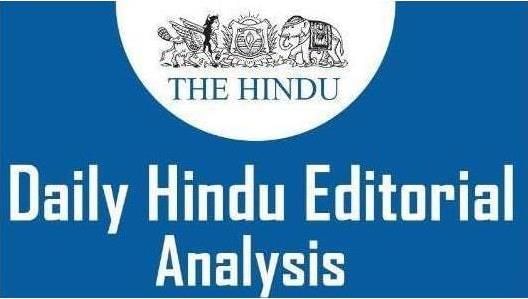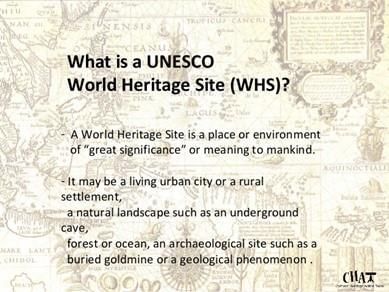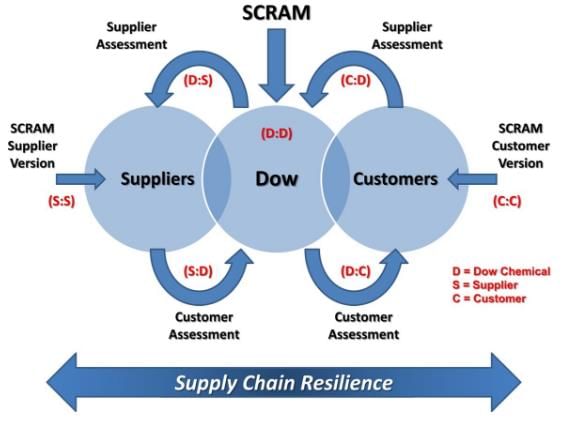UPSC Exam > UPSC Notes > Additional Study Material for UPSC > The Hindu Editorial Analysis- 30th December, 2020
The Hindu Editorial Analysis- 30th December, 2020 | Additional Study Material for UPSC PDF Download
| Table of contents |

|
| 1. The Tragedy of Conservation |

|
| 2. The Broken Bonds of Democracy |

|
| 3. The Climate Policy Needs New Ideas |

|
| 4. Resilient Supply Chains as a Pandemic Lesson |

|

1. The Tragedy of Conservation
GS 3- Issue related to conservation
Context
There are many laws and acts in India for conservation and to protect forest dwellers. However, in many areas, forest dwellers are not satisfied with these laws and acts due to insecurity of their survival and livelihood.
Current Issue
- In 2012, UNESCO declared 39 areas covering national parks, wildlife sanctuaries, and reserved forests in the Western Ghats as World Heritage Site.
- These western ghat sites are crucial for their biodiversity value.
- Ten of them are from the state of Karnataka.
Unrest Among the Indigenous People
- As we know that the Ministry of Environment and Forests began identifying the potential heritage sites.
- Due to its identifying process, there has been unrest among the indigenous people.
- The major cause of their unrest is the fear for their existence in lands that they had inhabited for decades. And when these areas declared ecologically sensitive, then the movement of indigenous people got restricted.
- Against the backdrop of the Forest Rights Act of 2006 in India and the Declaration on the Rights of Indigenous People in 2007 by the United Nations, they (forest dwellers of Western Ghats) did not anticipate that they would have to deal with announcement of the World Heritage Site.


Population Structure of Western Ghat
- Western Ghats indigenous people, including the Particularly Vulnerable Tribal (PVT) Groups, constitute 44.2% of the tribal population of 6.95% of Karnataka.
- In the Western Ghats, some communities are living: Gowlis, Kunbis, Halakki Vakkala, Kare Vakkala, Kunbi, and Kulvadi Marathi.
- In the Forest Rights Act, they are treated as ‘other traditional forest dwellers’, as they inhabited this place prior to December 2005 and depend on the forest or forest land for their livelihood needs.
- The major livelihood work of them is collecting minor forest produce, like cinnamon and kokum.
Dark Record of Karnataka
- As compared to other states, Karnataka has a dismal record in implementing the Forest Rights Act.
- In 2018, it had recognised only 5.7% of total claims and 70% of the claims were disposed of, according to the Ministry of Tribal Affairs.
- There is inconsistency in the government's approach in settling the claims made by the tribals vs. claims made by other traditional forest dwellers.
- According to government, tribal applications constituted 17.5% of the claims and nearly all of them were settled, as well as, other claims were rejected as they were not backed by valid evidence and thus, claims made by other traditional forest dwellers were treated as inconsequential.
Challenges For Indigenous People
- Denying tribals or other traditional forest dwellers their rights in the forest will not serve the purpose of conservation very far.
- According to the Forest Rights Act, only those lands are recognised where people prove their occupation not later than December 13, 2005.
- As well as the combined stretch of land claimed by indigenous people is comparatively smaller than what has been taken away for building dams, mining, laying railway lines and roads, power plants, etc.
- 43 lakh hectares of forestland encroached both legally and illegally until 1980 when the Forest Conservation Act came into force, according to government record.
- After this forest conservation act, there is no significant conservation and change.
- The major reason for the conflict is to isolate the indigenous people from their natural habitats to protect biodiversity.
- There is thinking that resources have to be controlled and managed. But this theory is proved unproductive.
- According to The Global Environment Outlook Report: Even protected areas are increasing but there is decreasing biodiversity.
- We have to understand that people living in nature’s surroundings are integral to conservation as they relate with it in a more integrated way.
Suggestions
- Declaration of the Western Ghats as a World Heritage Site is as important in preserving the rich biodiversity of the region.
- It is internationally recognised that preserving biodiversity requires the legal empowerment of the people living in those areas. In this regard, the Forest Rights Act is an ideal law to build trust among indigenous peoples.
- The government must make an effort to build trust between its agencies of conservation and the people who depend on these forests. This trust can be made by treating them as equal citizens like everyone else in the country.
2. The Broken Bonds of Democracy
GS 2- Statutory bodies
Context
- The Central Information Commission (CIC), statutory body for the implementation for the Right to Information Act (RTI), ruled that the disclosure of identity of Electoral Bond Scheme donors will not serve any larger public interest and will violate provisions of the Act itself.
- This recent order by the CIC has again revealed the inherent problems surrounding the scheme. There is no other recourse but Supreme Court has to determine the law with regard to the scheme and the interpretation of the CIC.
Electoral Bond Scheme
- The electoral bond scheme, notified by the Centre in 2018, allows citizens and corporates to buy monetary instruments from the State Bank of India (SBI) and donate them to a political party, which is then free to redeem it for money.
- It conceals the identity of the donors and donees as well as the amount of donation.
Issue
- According to CIC, disclosure of names of donors and the donees may be in contravention of provisions contained in Section 8 (1) (e) (j) of the RTI Act itself, which exempt a public authority to give a citizen information available to a person in his fiduciary relationship, unless the competent authority is satisfied that the larger public interest warrant the disclosure of such information.
On the other hand, Section 8(2) directs that when public interest outweighs any harm to protected interests, the information sought for may be accessed. This Section begins with a non obstante clause. Therefore, it overrides the grounds erroneously relied upon by the CIC. - The public interest in the present matter is undisputable. The CIC, in an earlier order, deemed political parties to be public authorities under the RTI Act.
- Voters should know about the funds received by parties from donors in order to understand their financing and functioning. Donations by corporate entities would also be of interest to their shareholders and potential shareholders.
- According to citizen groups, information of donors must be disclosed in the interest of transparency, accountability and efficient functioning of central investigating agencies.
- In effect, the scheme is not transparent, promotes arbitrariness and is therefore illegal. It potentially promotes the circulation of black money, money laundering, cross-border counterfeiting and forgery. This goes against best practices of electoral democracy and is repugnant to the freedom of speech and expression.
In People’s Union for Civil Liberties v. Union of India (2003), the Supreme Court also held that the freedom of speech and expression also contained the fundamental right of a voter to secure information about the candidates who are contesting the election.
Conclusion
- The public scrutiny of parties and political candidates is an essential and inalienable part of a free and fair democratic process. By suppressing knowledge of political financing, authorities are breaking the basic bonds of democracy holding the country together.
- An unsettled law is as dangerous as bad law. The Court must conclusively settle the questions around the constitutionality of electoral bonds.
3. The Climate Policy Needs New Ideas
GS 3- Issues related to conservation
Context
- India, which is one the ‘major economies’, will meet its Paris Agreement target for 2030. Its per capita emissions are one-third of the global average and it will remain within its share of ecological space.
- So, 2021 will be the year for a new global climate policy and India has the soft power to bring together the high and low emitters.
About
- In an urbanised world, two-third of emissions arises from the demand of the middle class for infrastructure, mobility, buildings and diet.
- Well-being in cities is reflected in saturation levels of:
- Infrastructure with consumption (not production)
- Driving growth
- High urban per capita emissions.
- Infrastructure worldwide has used half of total materials, mainly construction, cement and steel, which have no substitute, and will need half of the available carbon space before comparable levels of infrastructure are reached globally around 2050.
- This saturation of construction has been achieved, with related high levels of wellbeing; hence, peaking of emissions comes after 2030 years.
- India was justifiably cautious at the Climate Action Summit and avoided commitments to cap emissions.
- Inequity is built into the climate treaty, which considers total emissions, size, and population, making India the fourth largest emitter, even though, according to the United Nations (UN), the richest 1% of the global population emits more than two times the emissions of the bottom 50%. Clearly, net zero or carbon neutrality by 2050, and the cap on emissions it implies, applies only to countries with high per capita emissions, GDP and wellbeing.
Background
- Reconstruction in the West after World War II led to acceleration of material use, which led to emissions and increase in global temperature around 1970, before growth commenced in Asia.
- Before infrastructure reaches saturation levels and manufacturing stabilises, material used in urban transformation shapes the ways of infrastructural developments in, and how they organise mobility and deliver manufactured goods, food and energy.
(a) Urban transformation requires huge amounts of iron and steel, cement, construction materials and energy for infrastructure.
(b) Due to migration of people from rural to urban areas, growth in per capita incomes, and vehicle emissions lead to increasing levels of material use or consumption more than manufacturing. - By 1950, the contribution of the U.S. to total emissions peaked at 40%. It has declined to approximately 26%, the largest in the world.
(a) The share decreased to one-fifth in 2010, when Asia with half the world population used its legitimate share of half of global resource use.
(b) China, with four times the population of the U.S., accounts for 12% of cumulative emissions, and India, with a population close to that of China’s, for just 3% of cumulative emissions that lead to global warming. - Hence, Industrialisation and urbanisation are not the problem ‘per se’; the problem is the way they were designed in the colonial context: keeping commodity prices low, overly resource-intensive, defining progress as material abundance, and assuming that technology would solve the ecological problem.
Reversal in Thinking
- Earlier, there was focus on physical quantities which affected our nature whereas solutions require analysis of drivers, trends and patterns of resource use.
- New thinking is the need of an hour and it must enable politics to acknowledge transformational social goals and the material boundaries of economic activity altogether.
- Modifying unsustainable patterns of natural resource use and ensuring comparable levels of well-being are societal transformations and interlink with international cooperation is a must to serve sustainable development.
Soft Power
- India must highlight its unique national circumstances. For example, the meat industry, especially beef, contributes to one-third of global emissions.
(a) Transport emissions account for a quarter of global emissions. They are the fastest growing emissions worldwide and have surpassed emissions from generation of electricity in the U.S. Transport emissions are the symbol of Western civilisation and are not on the global agenda.
(b) Coal accounts for a quarter of energy use. It powered colonialism. Rising Asia uses three quarters as coal drives industry and supports the renewable energy push into cities. - India, with abundant reserves and per capita electricity use that is one-tenth that of the U.S., is under pressure to stop using coal, even as it aims to shift to electric vehicles and eliminate oil instead.
Way Ahead
- India adopted sustainable benchmark like housing size and density, public bicycle transport and eliminating food waste. There is a need to change wasteful behaviour in the West.
- India has the credibility and legitimacy to push an alternate 2050 goal for countries currently with per capita emissions below the global average — for example, the goal of wellbeing within ecological limits, the frame of the Sustainable Development Goals, as well as multilateral technological knowledge cooperation around electric vehicles, energy efficiency, building insulation and a less wasteful diet.
- Emissions are the symptom, not the cause of the problem. India, in the UN Security Council, must push new ideas based on its civilizational and longstanding alternate values for the transition to sustainability.
4. Resilient Supply Chains as a Pandemic Lesson
GS 3- Effects of liberalization on the economy, changes in industrial policy and their effects on industrial growth
Context
- COVID-19 pandemic highlights the importance of creating resilient supply chains that can withstand disruptions and ensure reliability for the global economy.
- Disruptions in supply chains can be natural or man-made and man-made interruptions in supply chains are also equally disruptive.
Examples of Weak Supply Chains
- Saudi Arabia: Terrorist drone attacks on Aramco’s oil refineries in Saudi Arabia in September 2019 resulted in a drop of 5.7 million barrels of oil per day, triggering a steep plunge in Saudi Arabia’s stock market and a sharp spike in global oil prices.
- China: China has long practiced “supply chain politics”. Japanese entrepreneurs learnt a hard lesson when the detention of a Chinese fishing trawler captain in 2010 near the disputed Senkaku Islands resulted in the Chinese government cutting off exports of rare earths to Japan.
- India: During COVID-19 pandemic, several companies felt the disruption in the automotive, electronics and white goods sectors. India excels in the pharmaceuticals sector but the over-reliance on Active Pharmaceutical Ingredients from China still creates vulnerabilities in the value chain.
- USA: Tensions with China led the United States government to impose restrictions on export of microchips to China’s biggest semiconductor manufacturer, following assessment that there was an “unacceptable risk” that equipment supplied to it could be used for military purposes.
New Initiative
- To enhance greater weaponization of trade and technology, India, Japan and Australia initiated the Supply Chain Resilience Initiative (SCRI) in September 2020, focusing on automobiles and parts, petroleum, steel, textiles, financial services and IT sectors.
(a) The SCRI may be bolstered by the future involvement of France, though this might depend on the European Union’s position. The United Kingdom has also shown interest in the SCRI.
Moves By Australia & Japan
- Geo-politics and geo-economics can never be truly separated. China has often used its economic leverage to weaken an opponent’s resolve on contentious issues. It has resorted to tactics of maintaining advantageous trade and economic engagement, without relenting on strategic issues.
(a) China’s calls for “normal relations” with India are unrealistic given the continuing face-off in Ladakh. - In this scenario, Australia demonstrated strong political will in countering arbitrary Chinese sanctions imposed on its key exports of grain, beef, wine, coal etc. Moreover, it also demanded an inquiry into the origins of the COVID-19 pandemic and advocated a robust Indo-Pacific vision.
- Japan has invested hundreds of billions of dollars in the Chinese economy since the normalisation of diplomatic ties in the 1970s.
(a) For many Japanese companies, global performance and profits are linked to manufacturing facilities and supply chains in China. They have also shown an early capacity for risk mitigation through the “China Plus One” business strategy, aimed at diversification of investments to the Association of Southeast Asian Nations (ASEAN), India and Bangladesh.
(b) In Phase-1 of Japan’s $2.2 billion Relocation Package, 89 Japanese companies availed subsidies to diversify out of China. Of these, 57 companies relocated to Japan, 30 to Southeast Asia and 2 to India.
(c) Many small and medium enterprises (SMEs) chose to relocate to Southeast Asian countries such as Vietnam, Thailand and Malaysia. This is surprising since Japanese entrepreneurs are far more familiar with the cultural and business environment in ASEAN countries as compared to South Asia. - Companies in health care and medical devices, especially those manufacturing personal protective equipment (PPEs), would have benefited more by shifting to India which offers a much larger domestic market as well as lower manufacturing costs for global exports.

India’s Vulnerabilities
- India is such a large emerging economy which neither can afford the shocks of disruption in supply chains nor can it allow itself to be held hostage due to an over-reliance on imports.
(a) COVID-19 caused a breakdown in global supply chains in the automotive sector since most global manufacturers in China abruptly went offline. - Despite being the fourth largest market in Asia for medical devices, India has an import dependency of 80%.
(a) Among the biggest exporters to India in this field are China, the U.S., Germany, Singapore and Japan. This is clearly not sustainable.
(b) Given the renewed thrust in the health-care sector, this is the right time to fill gaps through local manufacturing. - India’s electronics industry was worth $120 billion in 2018-2019 and is forecast to grow to $400 billion by 2025.
- Today, India is seeking to enhance its presence substantially in the global supply chains by attracting investments in the semiconductor components and packaging industry.
- The government is actively promoting domestic manufacture of printed circuit boards (PCBs), components and semiconductors, as the Indian electronics sector gradually shifts away from completely knocked down (CKD) assembly to high value addition.
Defence Sector
- Defence is among the key pillars of the ‘Atmanirbhar Bharat’ policy. The government is providing a big boost to defence manufacturing under the ‘Make in India’ programme. It has identified a negative import list of 101 items.
- There is a tremendous opportunity for foreign companies to enter into tie-ups with reputed Indian defence manufacturers to tap into the growing defence market in India.
- The push for self-reliance through ‘Atmanirbhar Bharat’ is not an autarkic policy. It does not imply foreclosure of the Indian economy to foreign trade and participation in the global economy.
- On the contrary, it is aimed at strengthening India’s capacities to participate more vigorously without being prey to supply chain disruptions.
Conclusion
India has the capacity and the potential to become one of the world’s largest destinations for investments, and one of the world’s largest manufacturing hubs, in the aftermath of the pandemic.
The document The Hindu Editorial Analysis- 30th December, 2020 | Additional Study Material for UPSC is a part of the UPSC Course Additional Study Material for UPSC.
All you need of UPSC at this link: UPSC
|
21 videos|562 docs|160 tests
|
FAQs on The Hindu Editorial Analysis- 30th December, 2020 - Additional Study Material for UPSC
| 1. What is the main focus of the article "The Tragedy of Conservation"? |  |
Ans. The main focus of the article "The Tragedy of Conservation" is to discuss the challenges and shortcomings in conservation efforts and explore the need for new strategies to address environmental issues effectively.
| 2. How does the article "The Broken Bonds of Democracy" address the current state of democracy? |  |
Ans. The article "The Broken Bonds of Democracy" analyzes the current state of democracy and highlights the factors that have contributed to its weakening, such as political polarization, erosion of trust, and increasing authoritarian tendencies.
| 3. What does the article "The Climate Policy Needs New Ideas" suggest regarding climate policy? |  |
Ans. The article "The Climate Policy Needs New Ideas" suggests that existing climate policies are inadequate and calls for innovative approaches to tackle the challenges of climate change. It emphasizes the need for fresh ideas and strategies to effectively mitigate greenhouse gas emissions and adapt to the changing climate.
| 4. How does the article "Resilient Supply Chains as a Pandemic Lesson" discuss the lessons learned from the pandemic? |  |
Ans. The article "Resilient Supply Chains as a Pandemic Lesson" discusses the importance of resilient supply chains in the wake of the COVID-19 pandemic. It explores the vulnerabilities exposed by the crisis and highlights the need to build more resilient and adaptive supply chains to ensure uninterrupted flow of essential goods and services in the future.
Related Searches
















